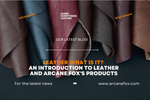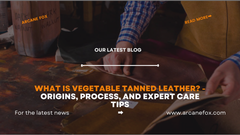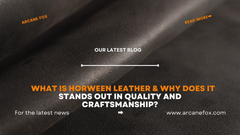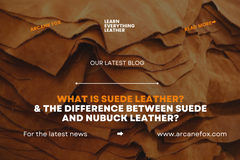What Is Safest Leather | Types Of Leather | Spot Fake Leather | Allergic To Leather | Causes Of Leather | Symptoms And Diagnosing Of Leather Allergy
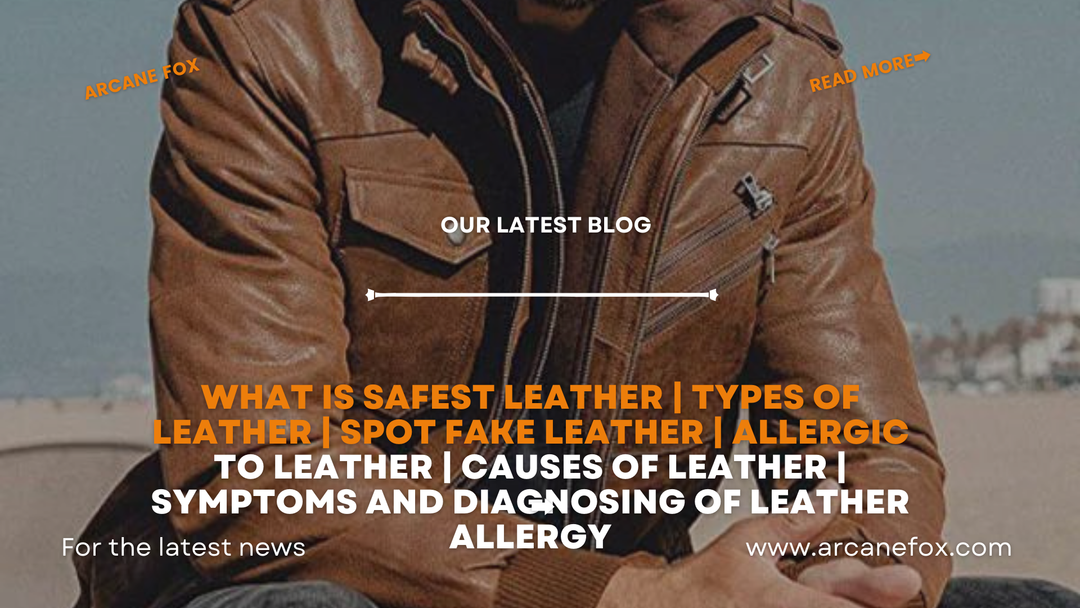
What Is Safest Leather | Types Of Leather | Spot Fake Leather | Allergic To Leather | Causes Of Leather | Symptoms And Diagnosing Of Leather Allergy
Ever wondered why your favorite leather jacket feels so safe and sturdy? Leather’s popularity spans centuries, thanks to its unmatched durability and timeless appeal. But with a myriad of leather types out there, how do you know which one is the safest? Let’s explore the fascinating world of leather to find out!
In this guide, we’ll delve into the different types of leather, how to spot fake leather, and what makes some leather safer than others. We’ll also touch on leather allergies—what causes them, common symptoms, and how to diagnose them. Whether you’re a leather enthusiast or just looking to make an informed purchase, this comprehensive overview will equip you with all the knowledge you need.
1. What is the Safest Leather?

When it comes to choosing the safest leather, it's essential to consider several factors such as durability, resistance to wear and tear, the tanning process used, and potential allergenic properties. The safest leather not only offers superior protection and longevity but also minimizes the risk of allergic reactions, making it a worthwhile investment for any leather enthusiast.
1.1 Durability and Resistance to Wear and Tear
Durability is a key factor in determining the safety of leather. High-quality leather should withstand daily use and resist damage from environmental factors such as moisture, heat, and friction. Full-grain leather is renowned for its exceptional durability and strength.
Because it retains the entire grain layer, it resists wear and tear better than other types of leather. This makes it ideal for high-use items like jackets, bags, and shoes, which need to endure regular handling and rough conditions.
1.2 The Tanning Process
The tanning process plays a significant role in the safety and quality of leather. Traditional chrome tanning uses chromium salts, which can cause allergic reactions in some individuals. For those with sensitive skin, chrome-free and vegetable-tanned leathers are safer alternatives.
Vegetable tanning uses natural plant-based tannins, which are less likely to cause irritation. This method also produces a more eco-friendly leather that develops a rich patina over time, adding to its aesthetic appeal and value.
1.3 Potential Allergenic Properties
Allergic reactions to leather are often caused by the chemicals used during the tanning and finishing processes. Dimethyl fumarate (DMF) and certain dyes can trigger contact dermatitis, resulting in redness, itching, and discomfort.
To minimize the risk of allergic reactions, it’s important to choose leathers that are free from these harmful chemicals. Vegetable-tanned leather and other hypoallergenic leathers are excellent choices for individuals with sensitive skin or allergies. They provide a safer, more comfortable wearing experience without compromising on quality or durability.
2. Choosing the Right Leather for Your Needs

Understanding the different types of leather and their safety profiles is crucial for making an informed decision. Full-grain and top-grain leathers are your best bet if you prioritize durability and protection. Corrected-grain and bonded leathers are more budget-friendly but may not offer the same level of safety and longevity.
Leather is made from the skin of an animal. Leather that has been corrected in any way is called top grain leather. Even though it may still have blemishes due to the nature of its production process. Top grain is less expensive and less desirable because it won't last as long as full-grain leather.
There are three main kinds of leather: aniline, semi-aniline and chromexcel. Aniline leathers are dyed with soluble dyes to keep their natural texture and markings intact.
While Horween's chromexcel remains undyed. This is what makes them the most natural-looking leathers, but more susceptible to fading, scratching and staining. Than chromexcel which conceals more blemishes and staying more guarded. Protected leathers have a non-leather cover attached or sprayed to protect it from damage.
The section of leather cut from the grain/corium junction is called by different names. Other names include: split leather, embossed leather, corrected leather, coated leather, painted leather (repeat: not a consistently used term), suede leather (again: not a consistently used term), and Nappa leather (again: not a consistently used term).
When selecting leather products, consider your specific needs and how you intend to use the item. For high-wear items like leather jackets, leather shoes, or leather bags, investing in full-grain or top-grain leather will provide the best protection and value over time.
2.1 Full-Grain Leather
Full-grain leather is often considered the safest and highest quality leather available. It is made from the top layer of the hide and retains all the natural grain. This type of leather is incredibly durable and develops a beautiful patina over time, enhancing its aesthetic appeal. Its robust nature makes it resistant to moisture and wear, providing excellent protection.
2.2 Top-Grain Leather
Top-grain leather is another safe and durable option. While it undergoes more processing than full-grain leather, it still offers great strength and a smooth finish. The processing involves sanding away imperfections, resulting in a more uniform look. Top grain leather is slightly more flexible than full-grain leather, making it a popular choice for many leather goods.
2.3 Corrected-Grain Leather
Corrected-grain leather, also known as genuine leather, is more affordable but less durable than full-grain and top-grain leathers. It is made from the layers of the hide that remain after the top has been split off. While it may not offer the same level of protection, it is still a viable option for certain products where high durability is not as critical.
2.4 Bonded Leather
Bonded leather is made from leftover pieces of hide that are bonded together with adhesive. It is the least durable and safe among leather types. While bonder leather is an economical choice, it doesn't provide the same level of protection or longevity as higher-grade leathers. It's best suited for items that don't require much wear and tear.
By choosing the right type of leather, you ensure not only the safety and durability of your purchase but also a timeless piece that can be cherished for years to come.
3. How to Spot Fake Leather - Get the Safest Leather Only!

In a world where imitation products are rampant, knowing how to spot fake leather is crucial. Genuine leather offers durability, comfort, and safety that synthetic alternatives often lack. Here’s a guide to help you how to identify genuine leather and ensure you’re getting the safest, highest-quality leather products.
3.1 The Touch Test
Genuine leather feels soft and flexible, with a slightly grainy texture. When you press it, it should have some give and wrinkles, much like skin. Fake leather often feels more like plastic, smooth and stiff, without the natural grain or wrinkles.
3.2 The Smell Test
Real leather has a distinct, earthy smell that synthetic materials can’t replicate. Fake leather usually smells like plastic or chemicals. This is one of the quickest ways to differentiate between the two.
3.3 The Look Test
Examine the surface of the leather closely. Genuine leather will have irregularities in the grain, such as variations in texture and small imperfections. Fake leather tends to have a uniform pattern, as it is manufactured and stamped to look like real leather.
3.4 The Water Test
Place a small drop of water on the leather surface. Genuine leather will absorb the moisture slowly, darkening as it does. Fake leather will not absorb the water, and it will simply bead up on the surface.
5.3 The Edge Test
Look at the edges of the material. Genuine leather has rough, natural edges, while fake leather has smooth, even edges that look too perfect. Real leather fibers are more pronounced and fray slightly, whereas fake leather edges are sealed and polished.
3.6 The Price Test
If the price seems too good to be true, it probably is. Genuine leather products come at a premium due to the quality and craftsmanship involved. Extremely low prices often indicate that the product is made from synthetic materials.
3.7 The Fire Test
This test should be done with caution and only if you’re willing to risk damaging the item. Carefully burn a small piece of the leather. Real leather will char and smell like burnt hair, while fake leather will melt and smell like burning plastic.
4. Why It’s Important to Spot Fake Leather
Identifying real leather is essential for ensuring you get the safest leather. Genuine leather not only offers superior protection and durability but also minimizes the risk of allergic reactions and other health issues associated with synthetic materials. Fake leather can contain harmful chemicals and lacks the breathability and longevity of real leather.
By using these simple tests, you can confidently choose genuine leather products, ensuring you receive all the benefits and safety that come with high-quality leather. Whether you’re buying a new types of leather jackets, bag, or pair of shoes, these tips will help you make an informed purchase and avoid the pitfalls of fake leather.
5. Allergic to Leather – Use the Safest Leather to Avoid Allergies

While leather is a highly durable and popular material, some individuals can develop allergies related to it. These allergies can be triggered by certain chemicals used in the tanning process or by allergens present in the leather itself. Understanding how to avoid these reactions by choosing the safest leather is crucial for those with sensitivities.
5.1 Understanding Leather Allergies
Leather allergies can manifest through contact dermatitis, causing skin irritation, itching, redness, and sometimes even blistering. The primary culprits are often the chemicals used in the tanning process, such as chromium salts, dyes, and formaldehyde. Here’s how you can avoid these allergens and opt for safer leather options.
1. Choose Vegetable-Tanned Leather
Vegetable-tanned leather is tanned using natural tannins from plant materials, such as bark, leaves, and fruits. This process avoids the use of harmful chemicals like chromium salts, making it a safer option for those with allergies. It’s not only eco-friendly but also less likely to cause skin reactions.
2. Look for Chrome-Free Leather
Chrome-tanned leather, which uses chromium salts, is a common cause of allergic reactions. Opt for chrome-free leather, which is tanned using alternative methods that do not involve chromium. Many manufacturers now offer chrome-free options due to increasing awareness of leather allergies and environmental concerns.
3. Test for Sensitivity
If you’re unsure whether a specific leather product will cause a reaction, do a patch test. Place the leather against a small area of your skin for 24 hours and observe any signs of irritation. This can help you identify which types of leather or treatments you may be allergic to.
4. Choose High-Quality, Full-Grain Leather
High-quality, full-grain leather tends to have fewer chemical treatments compared to lower-quality leathers. Investing in premium leather can reduce the risk of exposure to potential allergens. Full-grain leather is also more durable and long-lasting, providing better value over time.
5. Look for Hypoallergenic Labels
Some leather products are specifically labeled as hypoallergenic. These products are designed to minimize allergic reactions and often undergo rigorous testing to ensure their safety. Look for these labels when purchasing leather goods to ensure they are suitable for sensitive skin.
6. Maintain and Clean Leather Properly
Proper maintenance and cleaning your leather products can also help reduce the risk of allergic reactions. Use natural, hypoallergenic cleaning products and conditioners to keep the leather free from dust, dirt, and other potential irritants. Regular maintenance can help prolong the life of your leather products and keep them safe for use.
6. What Causes Leather Allergy?
The process of creating leather requires a variety of chemicals, many of which can trigger allergic reactions in sensitive individuals. One common allergen is dimethyl fumarate (DMF), a chemical used during the tanning process for its antifungal properties. Unfortunately, while DMF helps protect leather from mold, it can cause painful skin reactions for those who are allergic. If left untreated, these reactions can escalate, leading to severe discomfort.
5.2 Symptoms of Leather Allergies
If you're allergic to leather and don't use the safest options, your skin can become tender and red. Other signs of contact dermatitis include burning, itching, peeling, or dry skin. Diagnosing leather allergies can be challenging because the symptoms often develop slowly and may appear after prolonged exposure rather than immediate contact. The symptoms can resemble those of eczema, making an accurate diagnosis by a board-certified allergist essential.
Common Symptoms:
- Redness and tenderness
- Burning sensation
- Itchy skin
- Peeling or dry patches
- Blisters or hives (in severe cases)
5.3 How to Diagnose Leather Allergies?
If you suspect that you have a leather allergy, it is crucial to consult an allergist. An allergist will examine areas where symptoms are most likely to appear, such as your hands, wrists, and feet. If the cause of the allergy is not immediately clear, a patch test will be conducted. This test involves applying small amounts of potential allergens to your skin using adhesive patches. After a specified period, usually 48 hours, the patches are removed, and your allergist will examine your skin for any reactions.
Steps for Diagnosis:
- Physical Examination: Your allergist will check common areas affected by leather allergies.
- Patch Test: Small amounts of allergens are applied to your skin to identify the specific cause.
- Follow-Up: After removing the patches, your allergist will review the skin reactions to determine the allergy.
Following diagnosis, your allergist will develop a treatment plan to manage current symptoms and provide guidance on how to avoid future reactions. This may include recommendations for safer leather products, medications to alleviate symptoms, and strategies for minimizing exposure to allergens.
By understanding the causes, symptoms, and diagnosis methods of leather allergies, you can take proactive steps to protect your skin and enjoy leather products safely. Opt for safer leather options, such as vegetable-tanned or chrome-free leather, and consult a specialist if you experience any adverse reactions.
6. Moving Forward
For individuals allergic to leather, choosing the safest leather is essential to avoid discomfort and potential health issues. Firstly, by opting for vegetable-tanned or chrome-free leather, you can significantly reduce the risk of allergic reactions. Additionally, testing for sensitivity before making a purchase can help ensure that the leather will not cause irritation.
Moreover, selecting high-quality products ensures that you can enjoy the benefits of leather without the associated risks. Furthermore, always look for hypoallergenic labels to guarantee the safety of the leather. Finally, maintain your leather goods properly to ensure they remain safe and comfortable to use over time.
By being informed and cautious, you can find leather products that not only meet your needs but also keep you safe from allergic reactions. Whether you’re buying a new pair of shoes, a handbag, or a leather jacket, these tips will help you make a smart and healthy choice.

